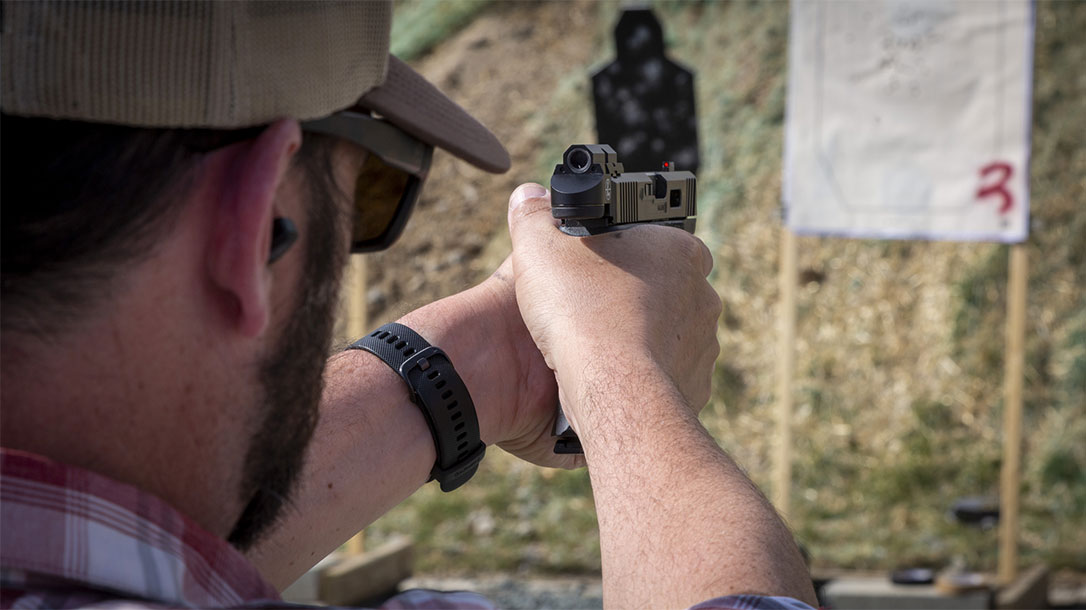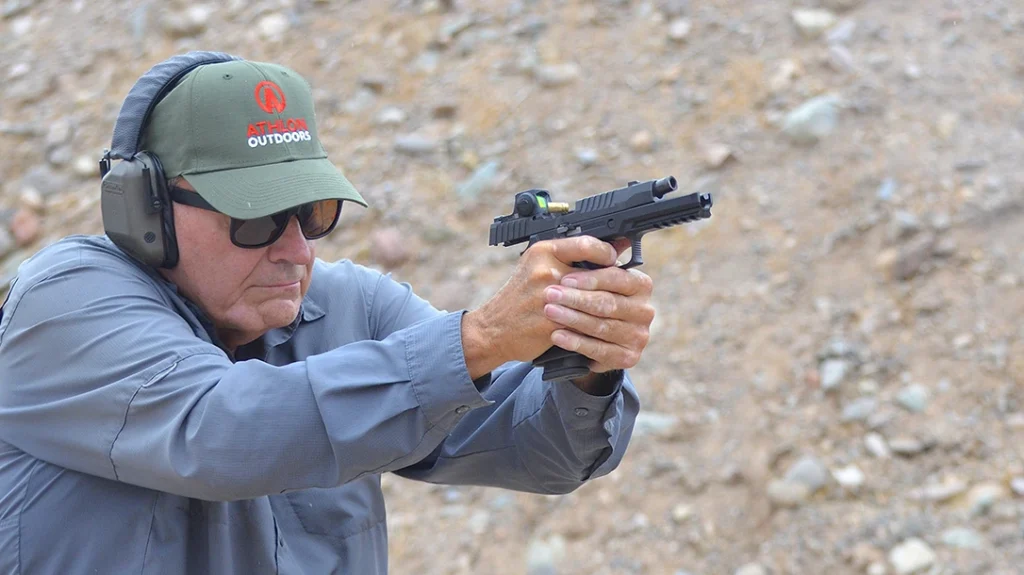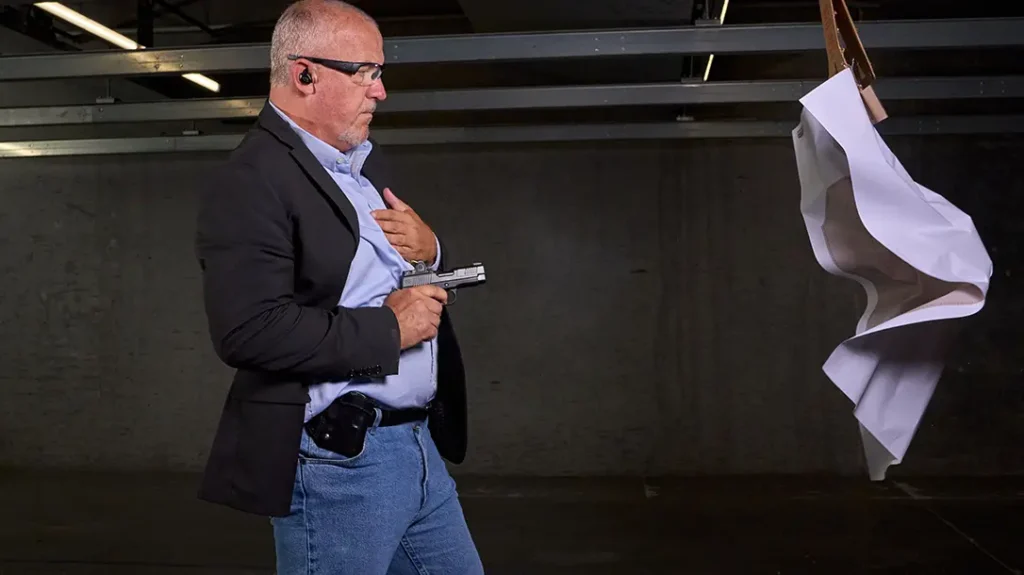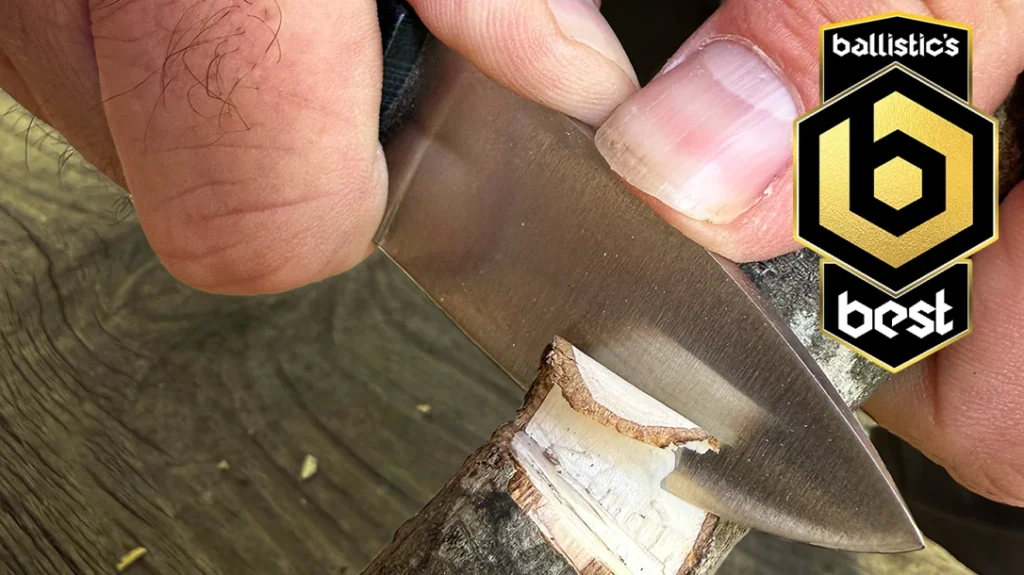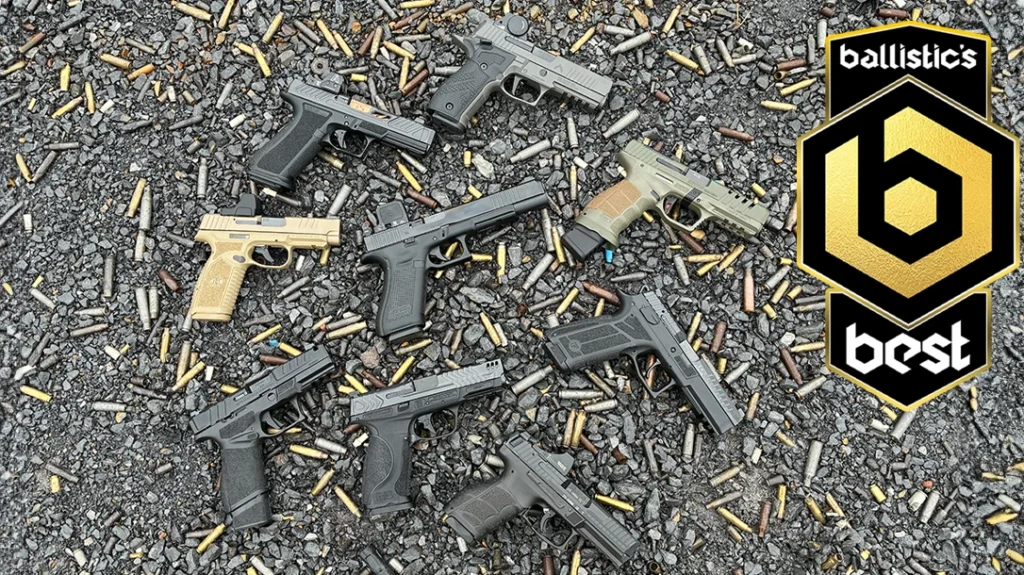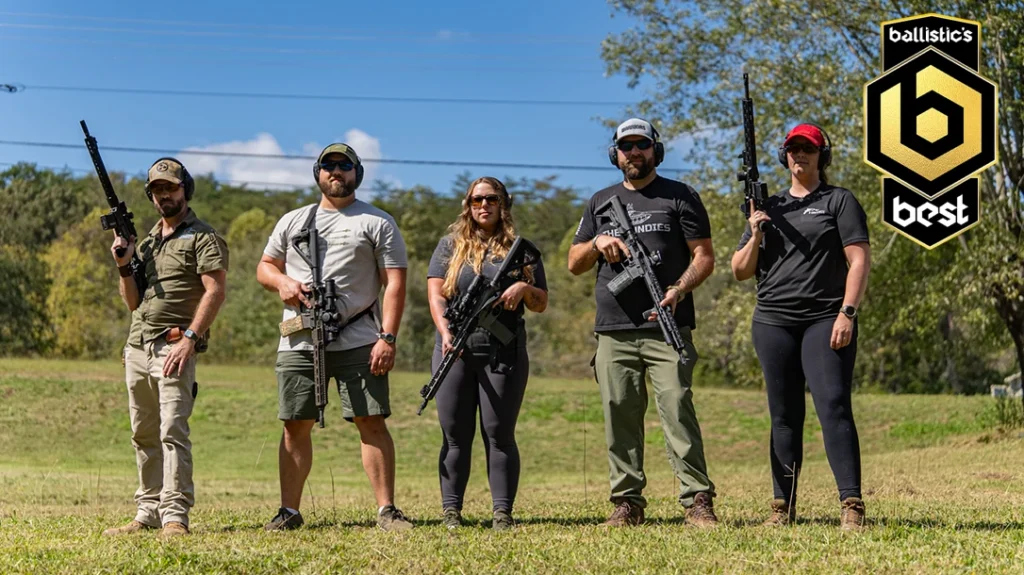From an outsider’s point of view, shooting can appear as simple as aiming, squeezing the trigger, and hoping you hit your intended target. However, if you take a closer look, you can quickly see there is more to shooting than meets the eye. Shooting is a sport that requires focus, dedication, and following certain steps in order to shoot precisely and accurately. Here is everything you need to know about the fundamentals of shooting and marksmanship.
7 Shooting Fundamentals
1 – Stance
One of the first steps toward becoming an excellent expert shooter is your stance. I like to think of your stance as the foundation of your shooting. How your feet and arms are positioned allows all the other shooting fundamentals to fall into place. It’s important to remember that without a good stance, you can kiss your chances of accurately shooting goodbye.
To help you fully understand the different stances, let’s examine two of the most popular ones—the weaver and isosceles.
Advertisement — Continue Reading Below
Starting with the weaver stance, bring your non-dominant leg in front of your dominant leg, keeping your feet shoulder-width apart. For your arms, your firing arm will extend fully out, and your support arm will have a slight bend.
Many individuals prefer this positioning because your body weight is distributed more evenly between both legs which adds extra comfortability when shooting. When in the weaver stance, always make sure you lean slightly forward and have your toes pointed towards your target.
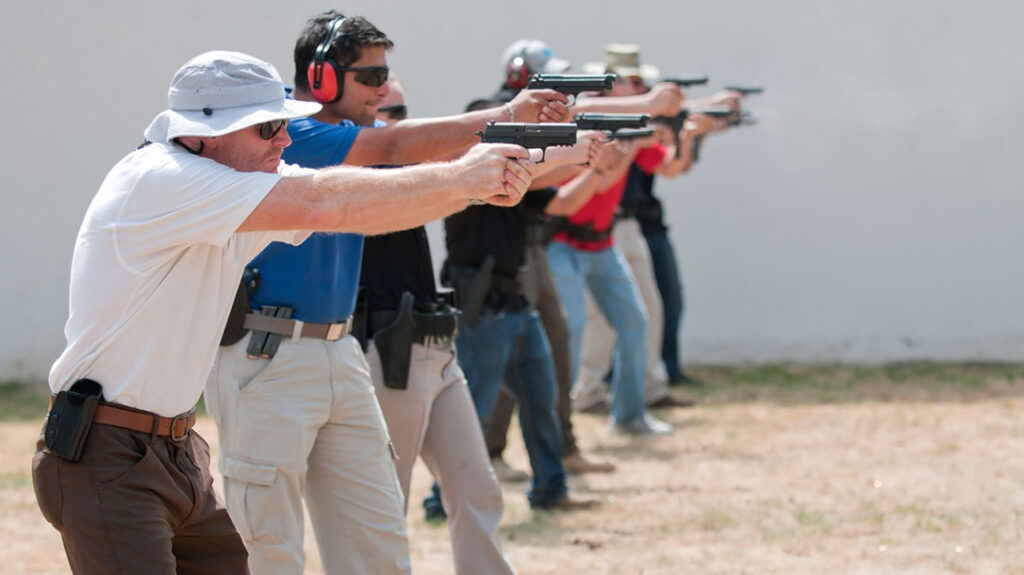
Advertisement — Continue Reading Below
The second stance is the isosceles stance, which involves placing your feet shoulder-width apart and slightly bending your knees. Once you have the correct foot positioning, you simply extend both arms, lean slightly forward, and make sure your feet are facing your target.
The isosceles stance is a fan favorite among individuals in the firearm community. Specifically, because it allows the shooter to be flexible and more relaxed when shooting.
It’s important to remember that the stance you choose depends on what feels the most natural and comfortable to you. I recommend practicing the stances at home to fine-tune your positioning and determine the best one for you.
Advertisement — Continue Reading Below
2 – Grip
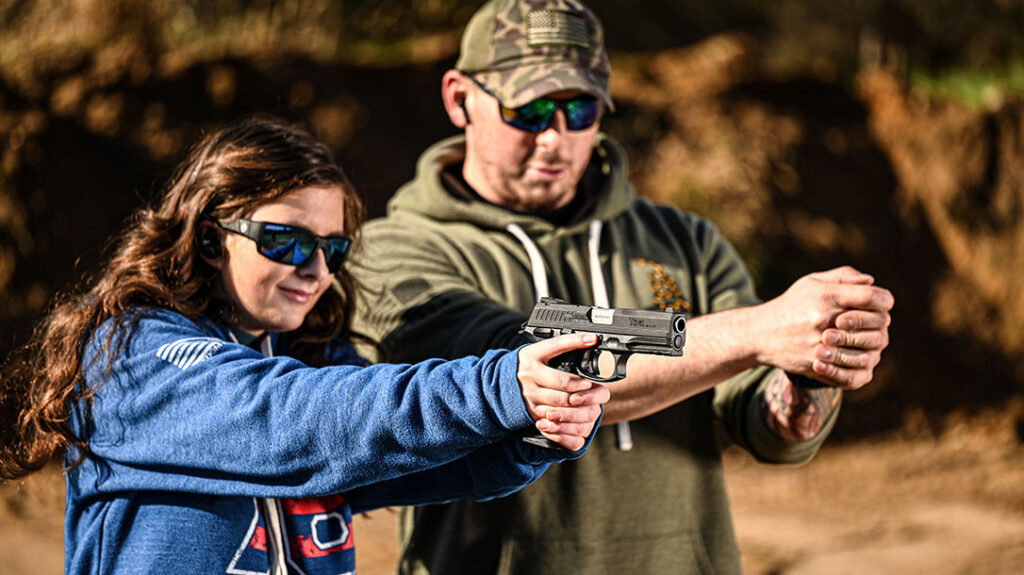
A proper grip is important because it can determine how well you will aim at your target. The moment you take hold of a firearm, you should have a strong and forceful grip that establishes immediate control of your gun.
For an example of a proper grip, we will reference a handgun.
Advertisement — Continue Reading Below
In this application, your dominant hand will go around the grip of the gun. Most handguns have a spot or indentation that functions as a thumb index. Holding the pistol firmly, you will place your thumb on the thumb indent. Then, your index finger rests on the frame until you are ready to fire.
Your support hand goes over your dominant hand on the grip to provide stability. It is important to remember that different-sized grips and hands can vary your grip slightly. But overall, this is a safe and comfortable way to hold your handgun for accuracy and stability.
3 – Sight Alignment
A shooter must follow two essential steps to ensure they accurately hit their target.
Advertisement — Continue Reading Below
The first step is proper sight alignment. Sight alignment is the process of lining up the rear and front sights on a firearm. This step is achieved by having your front sight centered inside of the rear sight.
You must ensure the top of the front sight is evenly aligned with the top of the rear sight.
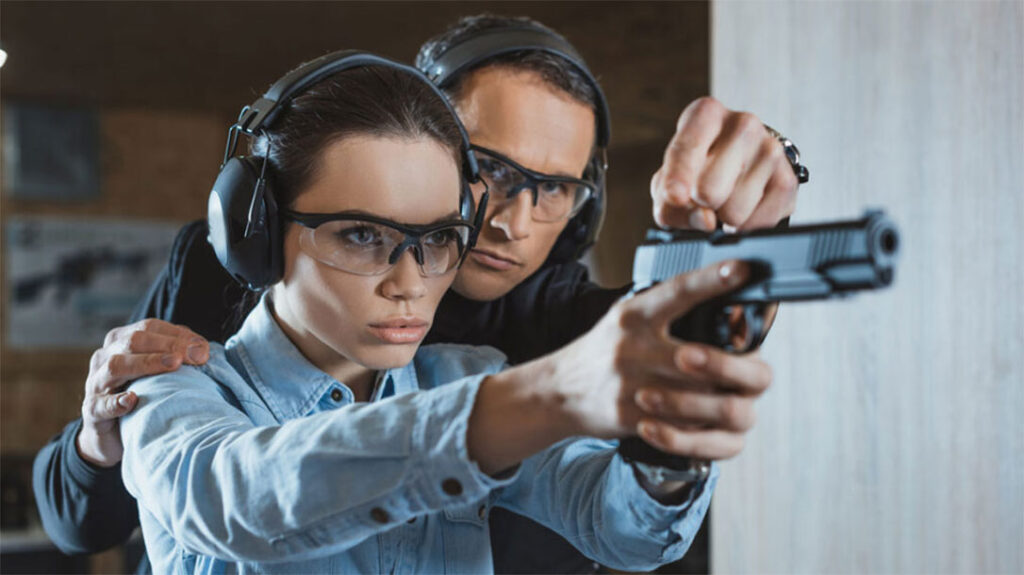
Advertisement — Continue Reading Below
4 – Sight Picture
The second step to shooting accurately and precisely is sight picture.
Sight picture is the image you see when you align your sights properly. Rather than focus on the target or the rear sights, you want your focus to be on the front sight.
5 – Breathing
As you shoot, it’s important to remember that the way you breathe matters and can make or break your accuracy. By practicing proper breath control, you can help control your shaky movements and relax your muscles.
Advertisement — Continue Reading Below
The last thing you want to do when shooting is tense up. So, it’s a good idea to avoid holding your breath or forcing all the air out of your body. To avoid this, here are two ways you can practice breath control.
The first is to shoot during your natural respiratory pause. A respiratory pause is the quick reset your body takes to restart your breathing process. This pause is taken between your inhale and exhale.
To practice this, take a few deep breaths and begin to focus on your breathing rhythm. Once you understand your specific breathing pattern, you can squeeze the trigger during your natural respiratory pause.
Advertisement — Continue Reading Below
The second way you can practice breath control is to shoot during a half-hold of your breath. After taking a deep breath in, exhale half of the air in your lungs, hold it, and squeeze the trigger. Once your shot is complete, finish exhaling.
The next time you go to the range, I recommend practicing both techniques to see which one feels more natural and helps you keep your firearm the steadiest.
6 – Trigger Control
Trigger control is the way in which a shooter squeezes the trigger without ruining their sight alignment. Many new shooters find that they are not accurate when shooting because they are either pulling or pushing the trigger.
The best way to practice trigger control is to place the pad of your index finger on the center of the trigger. Then, apply slow and even pressure toward the rear of your firearm until it fires.
7 – Following Through
Just because your firearm goes “bang,” that does not automatically mean you are done shooting. Following through is the last and often most overlooked step in the shooting fundamentals.
To accurately follow through, once a firearm is discharged, the shooter keeps their finger fully on the trigger and resets their sights back onto their target. Only then should they release their finger off the trigger.
Closing Remarks
Studying and practicing the seven fundamentals of shooting will help you become an accurate and precise shooter. Mastering each step will take a little time, dedication, and patience. But rest assured that once you conquer each step, you will blossom from feeling like a novice, newbie shooter to looking and acting like a professional marksman.
